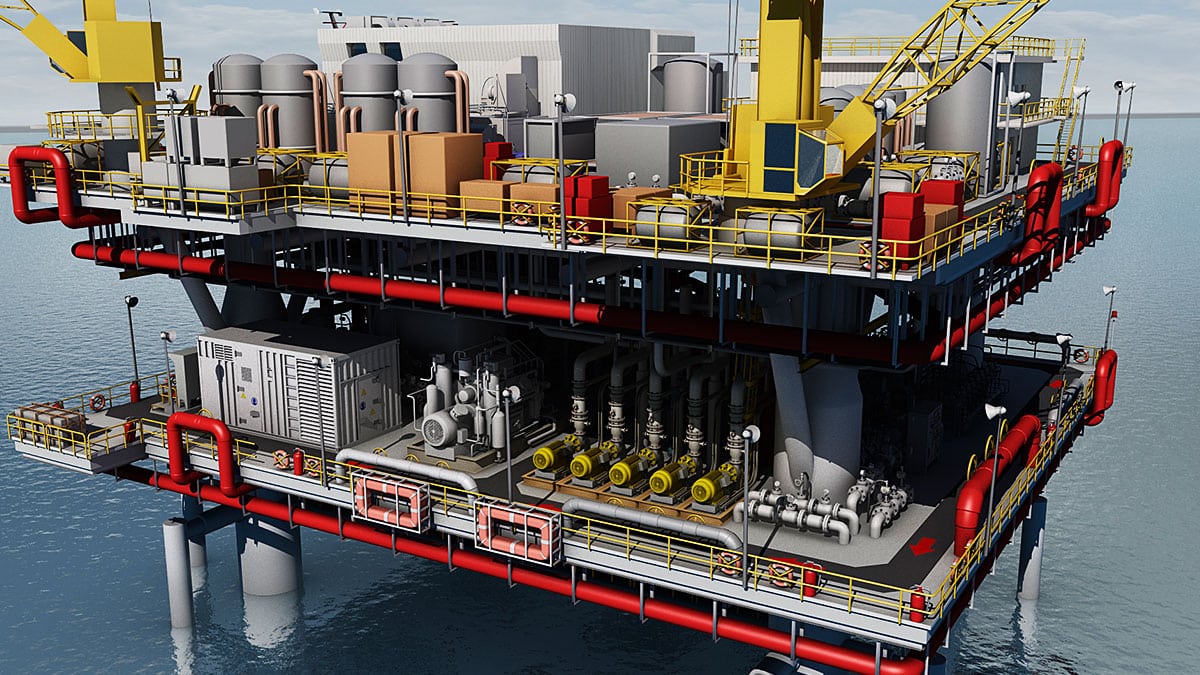Process piping is pipework which is designed to transport industrial materials. For example, in a food processing plant, let’s say for ice cream, pipes can be used to transport chocolate and cream from a large vat to areas all along the assembly line. Plumbing is another common form of process piping, where plumbers install pipes to carry waste and water to sewers. Chemical manufacturing facilities also use process piping to transport materials like natural gas used in manufacturing. For industrial process piping, the pipes may be constructed from plastic, copper or concrete and fitted with components like valves to control temperature and flow rates of the transported material. CAD drafting courses will teach students how to perform pipe drafting and the development of the piping layout of a facility.
Transporting Natural Gas
Natural gas is a limited and highly flammable fossil fuel, and also a non-renewable resource. This can be found in deep underground rocks, or in coal beds. Everyday uses for natural gas include heating homes and cooking food on a gas stove. In its raw form, natural gas is not as effective as fuel, therefore it must be processed to remove impurities like water. There are natural gas pipelines all across the U.S. and Canada transporting natural gas to processing plants, however many are close to reaching their capacity and require new solutions.
Understanding the Geological Setting
To locate deposits of natural gas, geologists may be needed to determine the geological setting of the deposit, and dictate the best drilling methods. A geologist may look at the geology of the area, the seismic energy and the magnetic properties of the rock formations underground before informing companies of where and how to drill. A highly controversial method of extracting natural gas is through fracking. Fracking, also known as hydraulic fracturing, involves fracturing rock using high pressure in order to better reach the natural gas. This is dangerous because fracking uses large amounts of water for pressure, and also because breaking the rock contaminates groundwater with carcinogenic chemicals from the gas.
Designing Pipelines and Drilling Methods
CAD colleges certainly have many students trying to develop better ways to retrieve gas and transport it across the country. Like fracking, gas transportation presents risks to the environment – there have been several recent incidents of pipeline ruptures and explosions. An engineering CAD technician with a process piping specialization is trained to work alongside petroleum engineers to find natural gas reserves around the world. They will work with geologists to study the ground and determine proper drilling methods for the type of terrain, taking into account the underground properties of the area. CAD training courses may teach students how to design 3D models for piping layouts, and to know where valves should be placed on a pipeline. A CAD technician or drafter may also design drilling tool equipment and their components, and work with senior engineers to make modifications to new designs.
Some potential careers for an engineering CAD technician pipeline specialist are:
- Field or service engineer
- Pressure vessel designer
- Piping designer
- Controls drafter
- Process piping drafter
- Structural detailer
- Process Technician



